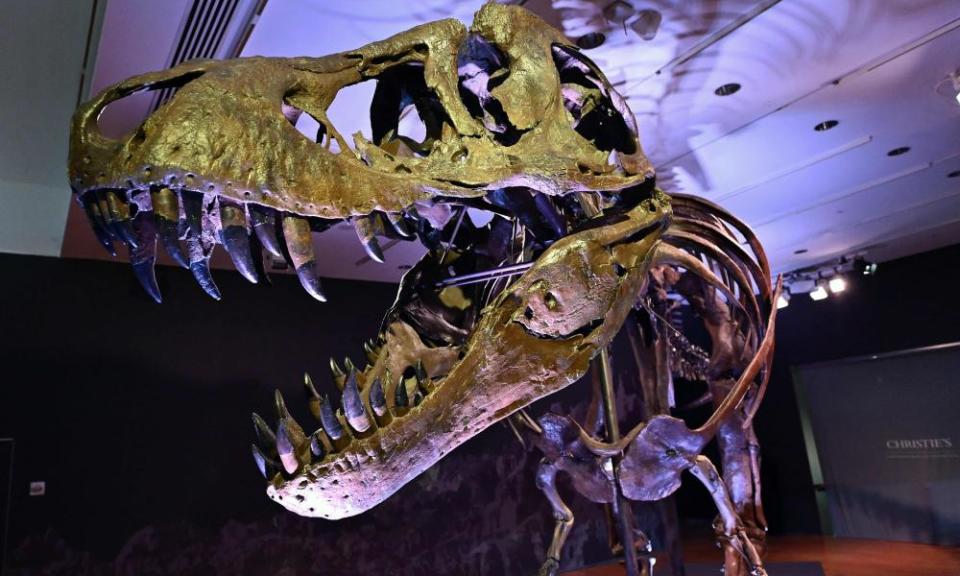Answer to fossil record puzzle may lie with teenage T rexes, study finds

Teenage T rexes and other carnivorous dinosaurs the size of lions or bears may have crowded out smaller species, explaining why there are so few of them preserved in the fossil record, research suggests.
Despite dominating the land for more than 150 million years, dinosaurs were not particularly diverse, and most known species were giants weighing 1,000kg or more – including massive, meat-eating megatheropods such as Tyrannosaurus rex.
Particularly absent from the fossil record are smaller dinosaurs weighing less than 60kg. This is very different to other vertebrate communities, which typically contain a broad spectrum of body sizes.
Related: Reality bites: Could Jurassic Park actually happen?
Now, a study published in Science has provided an explanation: megatheropods may have adopted a “grow fast, die young” approach that meant Earth was crammed with teenage meat eaters occupying ecological niches that would otherwise have hosted smaller carnivores.
To test this theory, Katlin Schroeder at the University of New Mexico and her colleagues analysed a dataset of dinosaur records representing 43 geographically located communities across seven continents, spanning 136m years. This confirmed that those communities containing megatheropods were largely devoid of medium-sized carnivores in the 100-1,000kg range, whereas those without megatheropods did contain these species.
Using existing information about the growth rates of these dinosaurs and the age at which they died, they also calculated that juveniles must have accounted for a substantial proportion of the total population of megatheropods – enough to have outcompeted similar-sized adults of different species.
“Not only were there many more juveniles than adults, they would have been right in this mass range that we’re missing from other species,” Schroeder said. These young megatheropods may well have occupied a different ecological niche to the adults – just as Komodo dragons do today, with their young hatching from eggs, scurrying up trees and eating insects and lizards, until they grow too big and then drop to the ground and start hunting larger creatures, from rodents to water buffalo.
“One thing that stands out about megatheropods is that as they grew they changed a lot,” said Schroeder. “An adult Tyrannosaurus rex was this huge, robust, bone-crunching animal, but as juveniles they were fairly light, fleet-footed, and they didn’t have deep, heavy skulls. They may have been the same genetic species, but they were entirely different in appearance and function.”
Steve Brusatte, a professor of palaeontology and evolution at the University of Edinburgh, said: “This study puts numbers on something we’ve long suspected but haven’t really proven: that the biggest meat-eating dinosaurs filled different niches in the food chain as they grew from miniature hatchlings into adults bigger than buses.
“This seems to be a consistent pattern in dinosaurs, especially those communities in the Cretaceous, towards the end of their reign. There were few meat-eating dinosaur species of moderate adult body size, and that’s because the juveniles and teenagers and subadults of the big bruising dinosaurs were controlling those niches. It’s an ecological structure that is very unlike what we are used to with mammals today.”

 Yahoo Finance
Yahoo Finance 